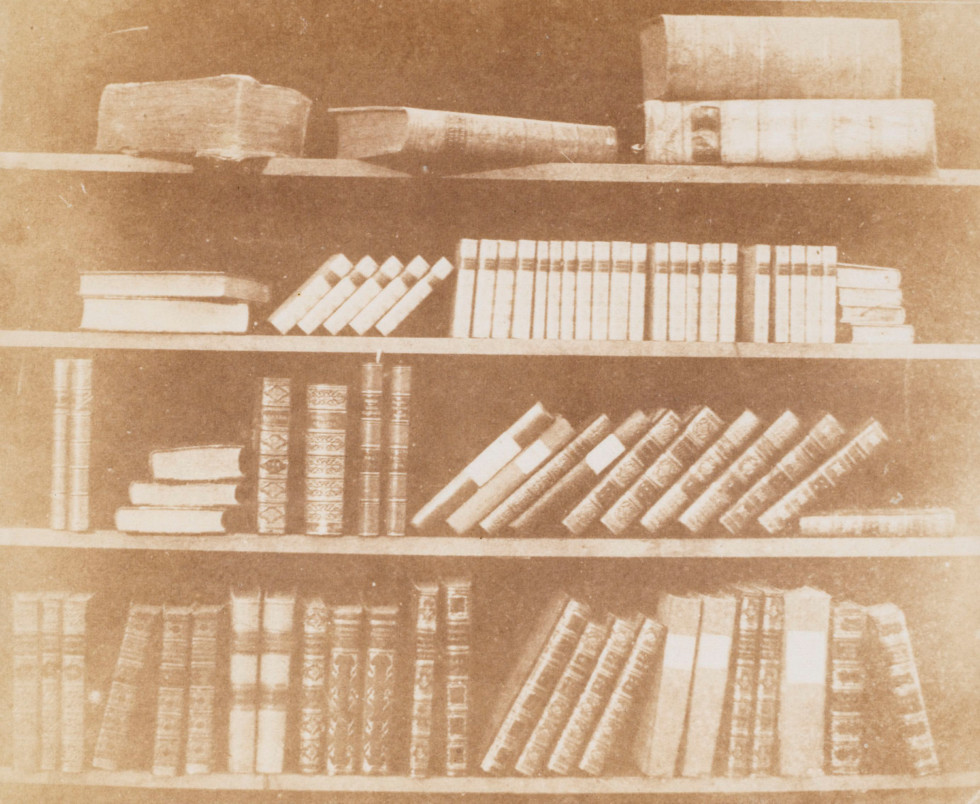
William Henry Fox Talbot, Four Shelves of Books, 1844 Salted Paper Print
Superficial? Ornament in Between Structure and Décor
Lecture by Christian Spies
20.1 2012
Stockholm
Superficial? Ornament in Between Structure and Décor
20 January 2012 at 15
In the Cinema
Admission free
In English
In his lecture, Spies will focus on this topic by discussing examples of Henry Fox Talbot’s Lace Photographs from the 1840s as well as the often highly decorative microscopic images of the 1850s and 60s. A series of painted nano-structures by Gerhard Richter will then bring us to contemporary art, on how this interlinking of ornamental structures and its depiction in photography and painting can point to the image’s very own capacity of presentation, which is never depiction without an iconic structure.
Christian Spies teaches Art History at the University of Basel, where he also leads a research project on Ornament within the National Competence Center Iconic Criticism. His fields of research are Iconic theory and the History of Modernism and Image and Ornament. He currently works a book on the “Empty Image”.
Module Ornament
Christian Spies, Vera Beyer, Martin Sundberg, Martin Kirves
Ornaments often were and still are being discounted as merely decorative accessories. Contrary to this, this module considers ornaments to be orderings of the visible, which are far from meaningless in the image either. Precisely because they defy representation, they show that images do not only reproduce the visible but rather arrange and structure it: ornaments identify images as structures of the visible. Thus, an ornament comprises an image matrix with its own laws, which offers a structural basis for a variety of other possible visualisations. A scope of such functions and structures of ornaments is explored in transcultural as well as historical comparisons: Does, for instance, the modernist criticism of the representational image concept reveal its ornamental basis? Do ornaments function in medieval contexts as an indication of transcendental order? Social dimensions of ornaments as visual and stylistic dispositions may be recognised as well as their pivotal function between image and writing. Individual exemplary research projects thus oppose the traditional marginalisation of ornaments by spotlighting it as a nucleus of iconic criticism.
In collaboration with eikones NFS Bildkritik, University of Basel, Switzerland.
